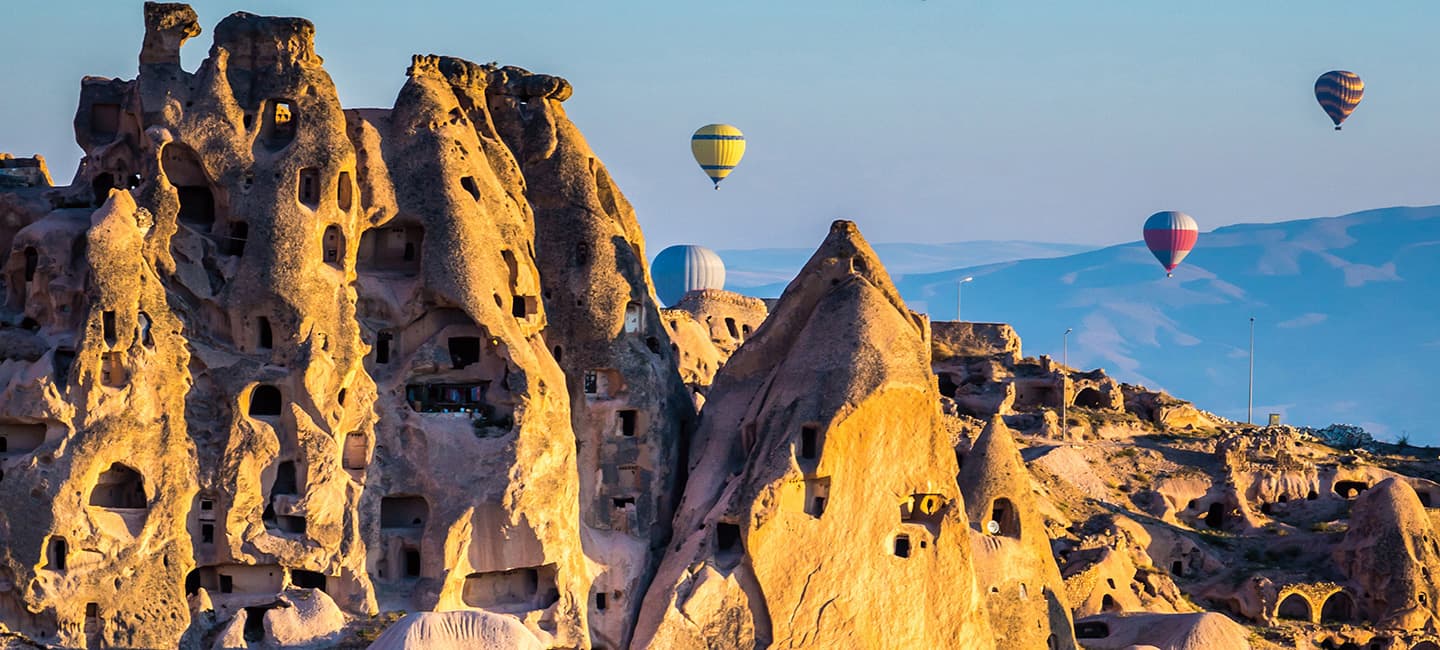Jim McMahon/MapMan®
Jim McMahon
In the heart of Turkey, hundreds of supersized rock formations jut into the sky. Some of them are known as fairy chimneys—and they make up one of the most unusual landscapes in the world.
Cartographer Jim McMahon, also known as Mapman, got the chance to visit this magical spot last summer. He creates all kinds of maps for Geography Spin. One type of map is a topographic map. It shows the physical features of an area, like valleys, hills, and mountains. Jim spoke to Geography Spin about exploring some of Turkey’s physical features up close.

